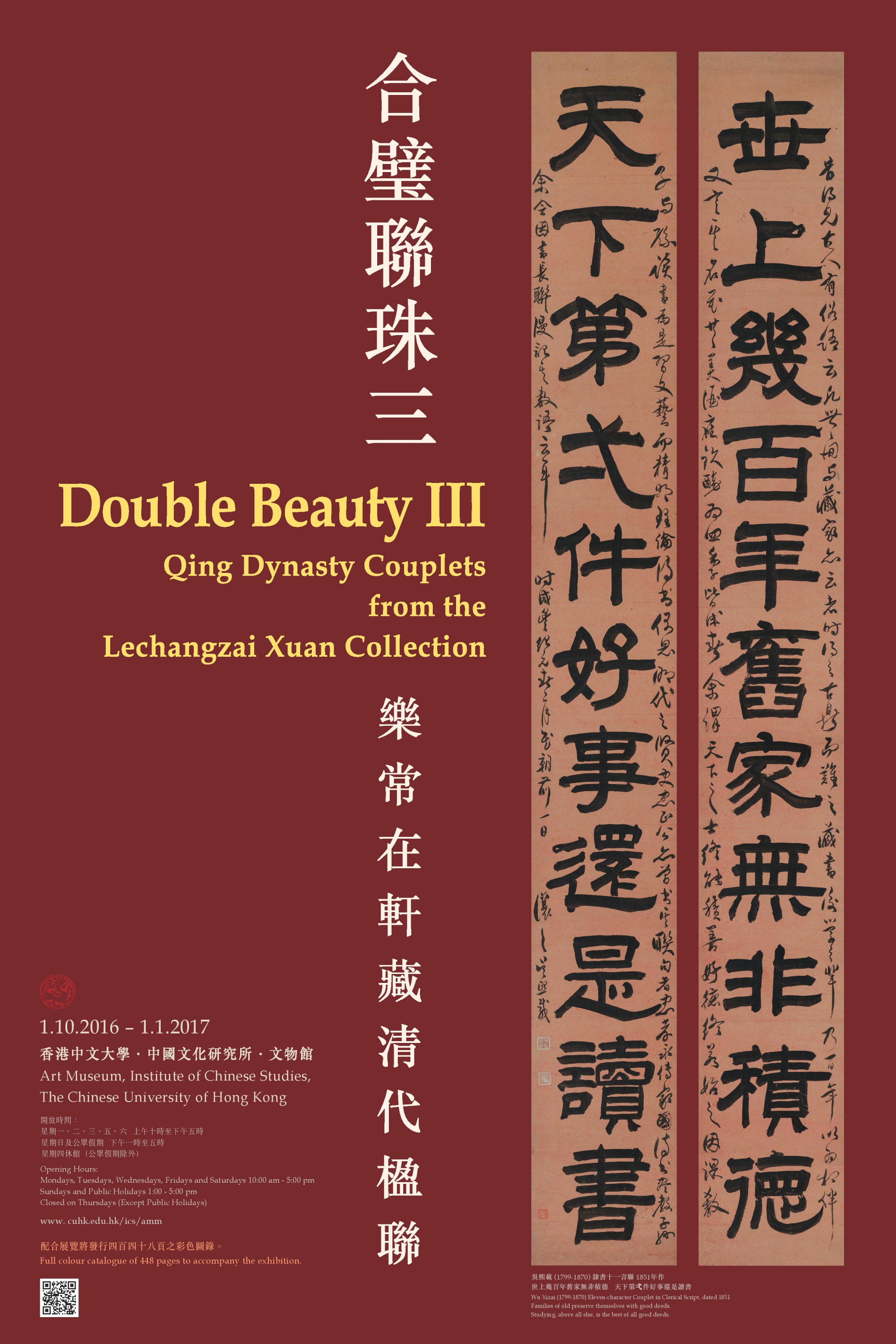Events
Double Beauty III: Qing Dynasty Couplets from the Lechangzai Xuan Collection
1 Oct 2016 - 1 Jan 2017
Opening Hours: Mondays to Wednesdays, Fridays and Saturdays: 10:00am-5:00pm Sundays and Public Holidays: 1:00pm-5:00pm Closed: Thursdays, Christmas Holidays (24-27 December) and New Year’s Eve (31 December)
Gallery I, Art Museum, Institute of Chinese Studies, The Chinese University of Hong Kong
39437416
The prevalence of couplet calligraphy in the Qing dynasty is too striking a phenomenon in the history of calligraphy to escape attention. Whether as a unique calligraphic genre or as tasteful objects to be given away in literati circles, couplets were of great significance both aesthetically and socially. An immense number of specimens have survived and are now in the collection of either public museums or private collectors, among which the Lechangzai Xuan Collection is certainly one of the most important in terms of quantity and quality. Mr Harold Wong, the master of the Lechangzai Xuan, grew up in a family where ink art was zealously practised and collected to emerge as a leading collector of Qing couplets. The partnership between the Wong family and the Art Museum went back a long way. As early as 1972, or only a year after the founding of the then Art Gallery (now the Art Museum), the father Mr Wong Pao-hsie contributed a loan of 82 couplets towards an exhibition and the associated catalogue. In the ensuing decades, the son Mr Harold Wong expanded his collection considerably and offered public access to a total of 300 works through two well-received exhibitions and their associated catalogues by the title of “Double Beauty” at the Art Museum in 2003 and 2007. This year, to the delight of many art lovers, another fine selection of 150 couplets by 134 masters, of which 71 are on display, are presented to further showcase the splendour of Qing couplets as well as the taste and acumen of a seasoned collector. In line with previous practices for the series, the exhibition is presented by the Art Museum and co-curated with the Department of Fine Arts, the faculty and students of which have also compiled the exhibition catalogue which is graced by scholarly contributions on invitation. This mode of collaboration not only demonstrates the close partnership between the Art Museum and collectors, the Department and scholars around the world but also the special role that the institution has been playing as a university museum. Providing valuable specimens for appreciation by members of the public and for research by the scholarly community, the exhibition certainly ranks among the most important ones of Chinese calligraphy in recent years.


